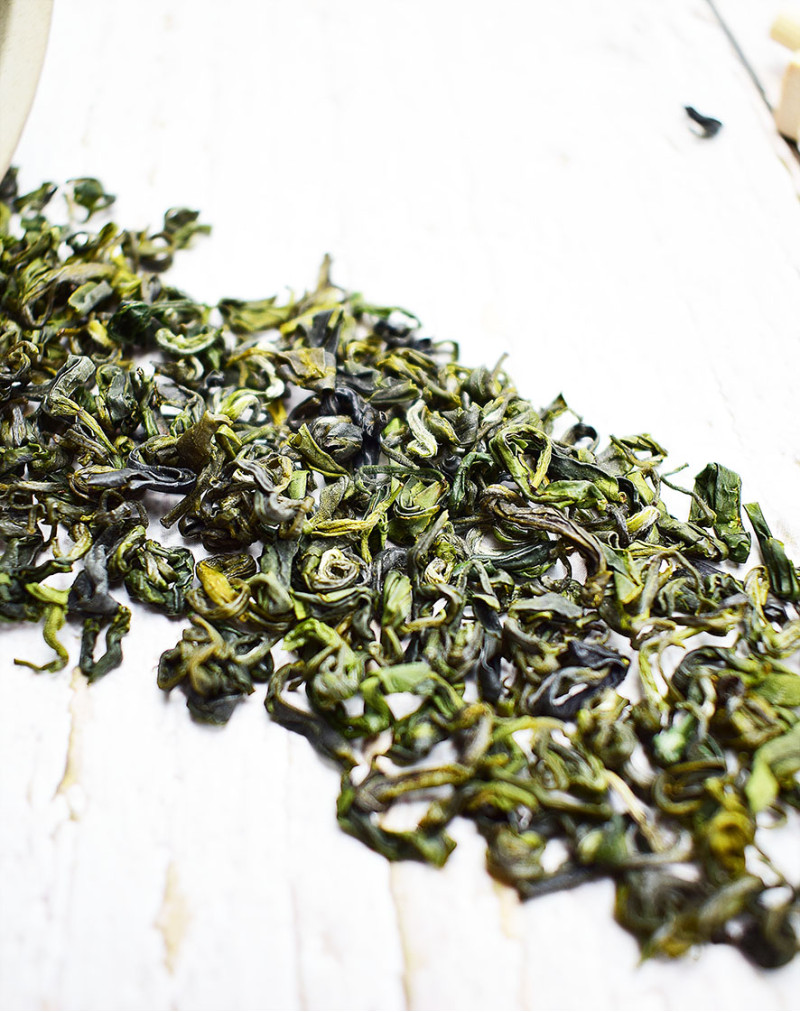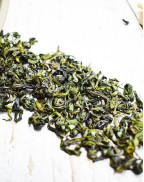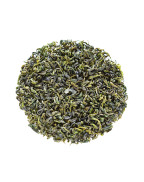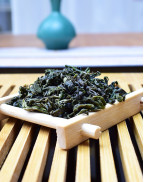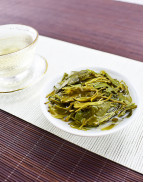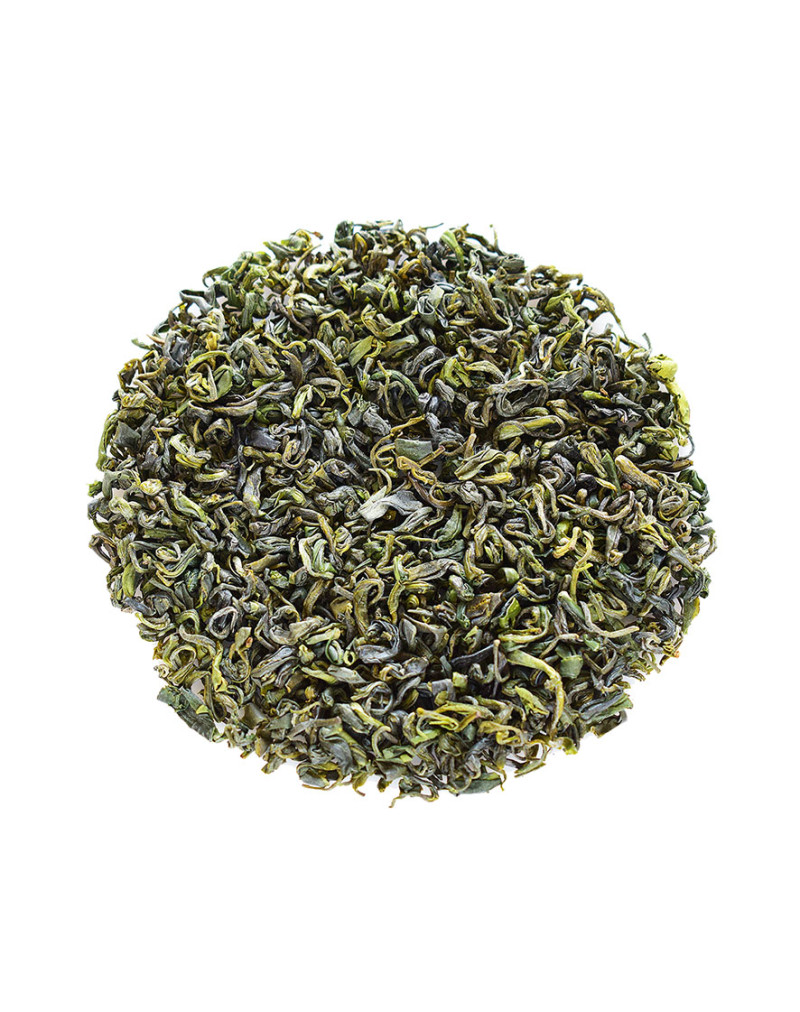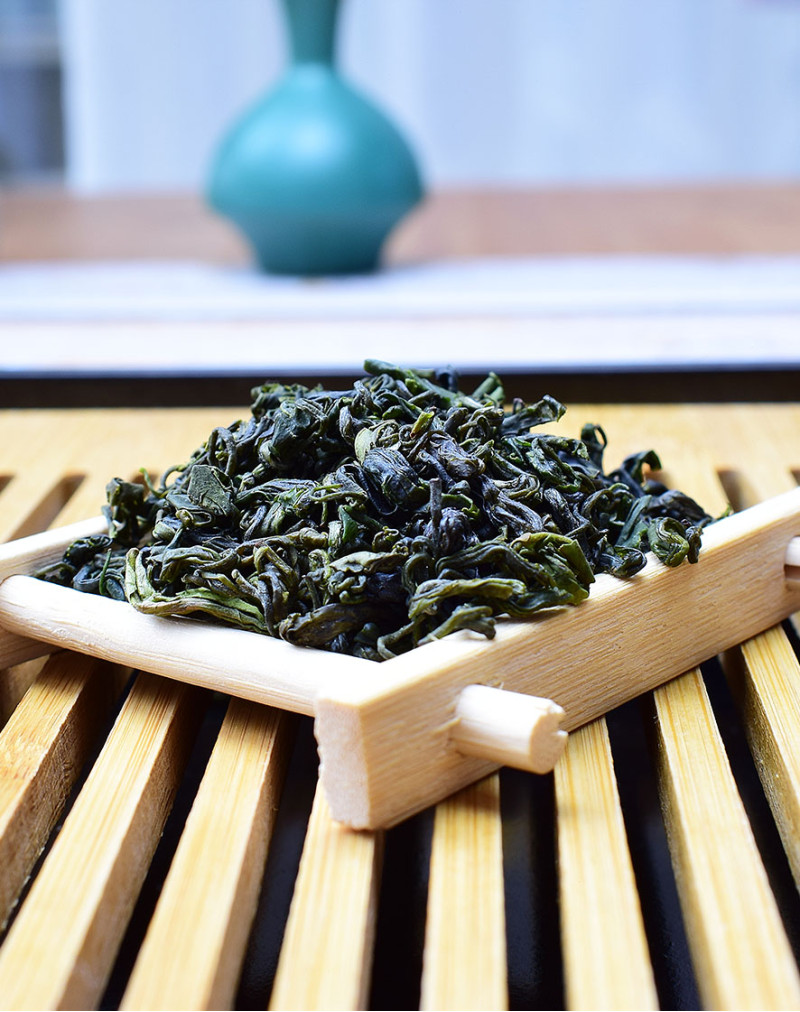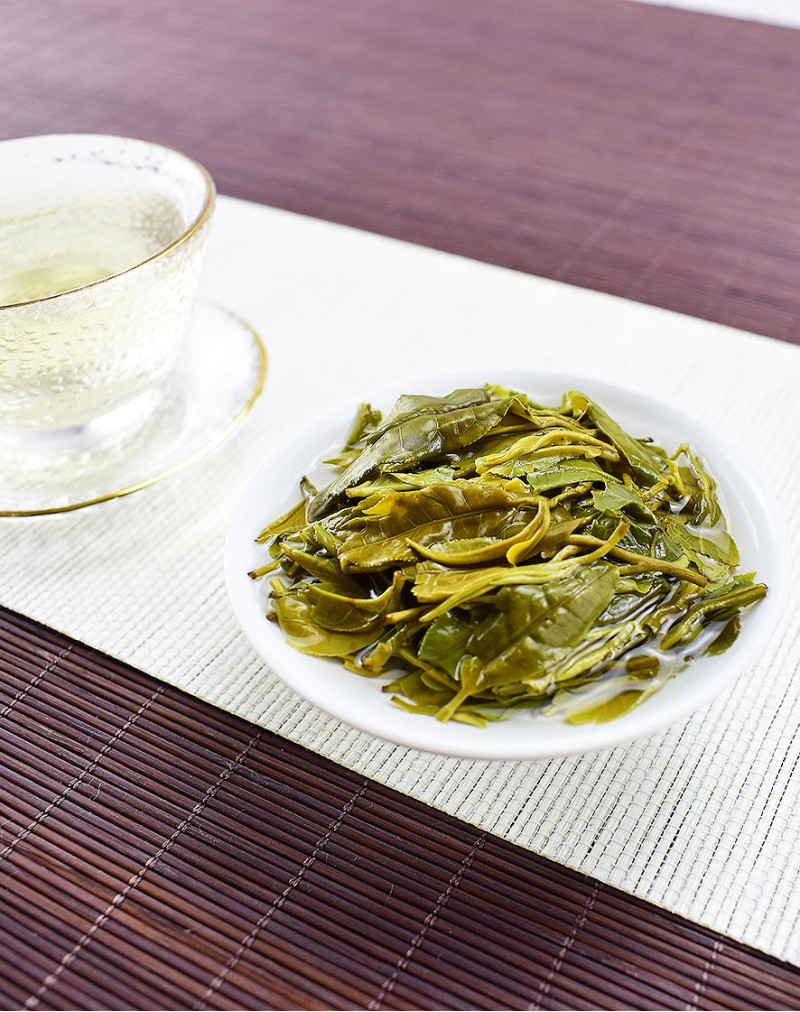Lu Shan Yun Wu Green Tea
- Product Code: simple
- Availability: In Stock
Basic Info
Name: Lu Shan Yun Wu Green Tea
Other Names:Lu Shan Cloud Mist Green Tea
Origin:Lushan City, Jiangxi Province
Taste & Aroma: Pure, fresh,grassy,fresh,brisk,sweet aftertaste,long-lasting fragrance
Item Form: Loose Leaves
Ingredients: 100% pure natural tea buds and leaves
Caffeine: Low
Flavor: Unflavored
Liquor: Yellowish green,clear and bright
Dry Leaf: Curled and twisted leaves, needle-shape, fresh green Tender buds and leaves with tightly curled shape, glossy jade color
Harvest Date: Spring 2024 (First Flush)
Season: Spring
Shelf Life: 10 months at room temperature / 18 months with low temperature storage
Storage: stored in cool, airtight, opaque containers - refrigeration is recommended
Lu Shan Yun Wu Green Tea
Lushan Yunwu tea,also known as Lushan Clouds and Mist tea, is a type of green tea produced in the Lushan Mountain range of Jiangxi Province, China. The tea bushes are grown at altitudes of around 800 to 1,200 meters above sea level and are surrounded by mist, which gives the tea its distinctive flavor. Lu Shan Yun Wu Tea is a traditional famous tea of Han nationality and one of the famous green teas in China.
Originally a wild tea, it is said to have been cultivated into artificial tea by Huiyuan, a famous monk of Donglin Temple (built in the ninth year of Dayuan (384) in the Eastern Jin Dynasty and one of the time-honored monasteries on Lushan Mountain). Later, it became a "royal tea" of the Song Dynasty (960-1279).
Lu Shan Yun Wu Tea gets its name from the origin of place - Lushan Mountain in Jiujiang City, Jiangxi Province, China.
Lushan Clouds and Mist tea is highly prized and is considered one of China's top ten teas. It has won numerous awards and accolades both domestically and internationally. In addition to its delicious taste, Lushan Clouds and Mist tea is also known for its health benefits. It is high in antioxidants and can help boost the immune system, reduce inflammation, and lower the risk of heart disease.
Today, Lushan Clouds and Mist tea is still primarily produced in the Lushan Mountain range, and the area has been designated as a national tea-growing region.
Lushan Mountain areas in Jiangxi Province has a long history of tea cultivation. According to Records of Lu Shan (廬山), Buddhism was introduced into China in the Eastern Han Dynasty (25 ~ 220). At that time, there were more than 300 monasteries on Mount Lu, and many monks gathered there. By the The Eastern Jin Dynasty (317 ~ 420), Lu Shan (廬山) area had become one of the Buddhist centers in China. According to records, Hui Yuan, a famous monk, lived on the mountain for more than 30 years and he recruited students and taught Buddhism on the mountain for many years. Under his leadership, the monks planted teas on Lu Shan (廬山) areas. In 1971, Lu Shan Yun Wu tea was listed as one of the special famous green teas in China. Its beautiful appearance, long-lasting fragrance and good taste gained a reputation at home and abroad. On November 15, 2019, it was selected into the Chinese agricultural brand directory.

Lushan Mountain Shrouded In Clouds
Show Full Description
About the name:
Its name "Lu Shan Yun Wu Tea (Chinese:廬山云雾)" means clouds and mists of Mount Lu. The words Lu Shan (廬山) refers to the Mount Lu.
The other part Yun Wu (云雾) translates as "Clouds and Mists" referring to the cool, cloudy and misty climate at picturesque Mount Lu regions that is perfect for producing premium teas that have a high level of theanine and are rich in tannins and vitamins.
About Lu Shan (廬山) / Mount Lu
With the Yangtze River in the north and Poyang Lake in the south, Lu Shan Mountain is located in Jiujiang City, Jiangxi Province It, also known as KuangShan or KuangLu (匡山 or匡廬),is one of the most famous national key scenic spots in China. It is famous for its picturesque peaks, dense forests, clear streams and cloudy weather all the year round.
The famous "Lu Shan Yun Wu Tea" grown in this good environment has the reputation of being more beautiful than orchids in appearance and smelling better than orchids.
Climatic characteristics
The main producing areas of Lu Shan Yun Wu Tea are located in Pokou, Wulao Peak, Hanyang Peak, Xiaotianchi, Xianren Cave and other places above the altitude of 800 meters.
Why is it always cloudy and foggy in Lu Shan (廬山) areas? There are three reasons: First, the Lushan area has abundant rainfall, and it is easy for precipitation evaporation to form a large amount of water vapor, especially in spring.
Second, Mount Lu has many ravines and valleys, and water vapor is not easy to diffuse in this complex terrain.
Third, Lu Shan (廬山) area is affected by the subtropical humid mountain climate, plus there are four distinct seasons, the length of day and night are different, and the temperature changes greatly.
The vast sea of clouds is common in Lu Shan (廬山)area. According to statistics, there are 195 foggy days here in one year.
Because of the high mountains and rainy weather, the temperature here is relatively low in spring. Tea trees sprout in late April to early May after the Grain Rain (谷雨) (6th solar term).
Moreover, since the germination period of Lu Shan Yun Wu tea is the most foggy period in Lu Shan (廬山) area, , which may be one of the reasons for the unique quality of the tea.
Therefore, the picking time of Lu Shan Yun Wu Tea is later than that of other teas, and it is usually picked between the Grain Rain (the sixth solar term) and the Beginning of Summer (7th solar term) around April 20th to May 10th every year.
Why is cloudy and foggy weather conducive to tea growth?
The large temperature difference between day and night can help tea produce more organic matter. When the temperature drops at night, the respiratory function will be weakened, which can reduce the consumption of organic matter by tea itself, promote the condensation of sugar into cellulose, and increase the content of effective components such as amino acids, caffeine and aromatic oils which are beneficial to tenderness and good quality.

Lushan Mountain Shrouded In Clouds
How to make Lu Shan Yun Wu Tea
The processing steps are roughly divided into the following steps.
1.Picking

Picking
This process takes place in late April or early May. Each bud and leaf about 3 cm in length will be picked by hand for later processing. In order to ensure the final quality of tea, purple buds, leaves damaged by pests and diseases, and those with rain on the surface can not be picked.
The fresh leaves will be kept in a cool and ventilated place for 4-5 hours. When the moisture content of the leaves drops to about 70%, the leaves will move on to the next step.
2.Fixation / kill-green

Fixation Or Kill Green
Tea makers put about 350-400 tea leaves into a wok at a temperature of about 150-160 degrees Celsius to rapidly stop the fermentation through water loss caused by heat. Right temperature and not too much tea at a time is crucial. This process will last about 6-7 minutes and finished when the leaves emit fragrance and become dark green.
3.Shaking-loosening

Shaking-Loosening
In order to reduce water content in the leaves, lower the temperature quickly and stop the yellowing processing of tea leaves which have just been fried in the last step should be shaken and scattered by shaking-loosening process on a bamboo mat about 10 times. This step is beneficial to the aroma and color of tea.
4.Rolling

Rolling
The tea leaves are put into a round tray and kneaded into clumps and then the warm clumps are unravelled into tea strips by hand for next steps.
5. First Drying
Then the leaves are returned to the pan-frying wok to further reduce water content to 30-35%.

First Drying
Then the leaves are returned to the pan-frying wok to further reduce water content to 30-35%.
6.Kneading

Kneading
Rub the tea leaves with palms to expose the white hairy tips attaching on leaves- this process is called "提毫". The purpose of this is to make the tea strips more tightly twisted and further remove water in the tea leaves. After these steps, fresh leaves are processed into solid spiral or needle-like shapes. Traditionally, this step has been done by hand. Now some tea factories also use machinery to achieve similar effects.
7.Final Drying

Final Drying
This process is also completed in a heated wok (75-80℃). Put the tea leaves in the wok and stir constantly to remove water content. When the tea leaves can be kneaded into powder with fingers, it means that the water content of the tea leaves is about 5-6%, and this step is completed. The final dry leaves need to be screened before packing.
Lushan Yunwu Green Tea is more than just a beverage; it is a testament to the harmonious relationship between nature and human cultivation. As you sip this exceptional tea, let its delicate flavors transport you to the mist-shrouded mountains of Lushan, where clouds dance among ancient tea trees and the air is infused with the fragrance of fresh tea leaves.
Indulge in Lushan Yunwu Green Tea and embrace the tranquility and rejuvenation it brings. Discover the perfect balance of flavor, aroma, and health benefits that make this tea a truly extraordinary experience.
| Chinese Gongfu Method | |
| Tea | 3g |
| Water | Gaiwan 3oz / 90ml |
| Time | 4 Infusions (15s, 40s,1m10s, 2m) |
| Temperature | 80 °C / 176 °F |
| Teapot Method | |
| Tea | 5-7g |
| Water | Teapot (8oz / 240ml) |
| Time | 1- 4mins |
| Temperature | 80 °C / 176 °F |


